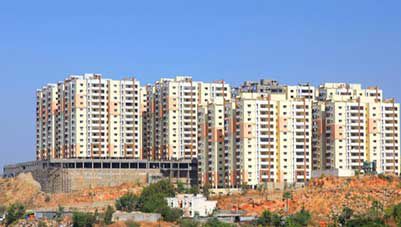Are you a business owner looking to minimise your tax liability while investing in infrastructure or other key sectors? Section 35AD of the Income Tax Act could be the perfect solution for you. Introduced to incentivise capital expenditure in certain specified businesses, this provision allows eligible entities to claim 100% tax deductions on qualifying investments.
In this comprehensive guide, we will explore the eligibility criteria, conditions, and benefits of Section 35AD, along with practical examples and actionable advice for claiming deductions effectively. Let us dive in and understand how this provision can help your business save taxes and contribute to economic growth.
Introduction
Section 35AD of the Income Tax Act is a tax provision that enables businesses to claim deductions on capital expenditure incurred in specified sectors. This deduction is aimed at promoting infrastructure development, employment generation, and long-term economic growth.
Applicable from Assessment Year (AY) 2010–11 onwards, Section 35AD offers a significant advantage to businesses by allowing them to deduct 100% of certain capital expenses in the same financial year, rather than spreading it over several years. However, exclusions like land purchase, goodwill, and financial instruments ensure that deductions are focused on productive investments.
What is Section 35AD of the Income Tax Act?
Section 35AD is a provision under the Income Tax Act, 1961, that allows businesses operating in specified sectors to claim full deductions on their capital expenditure. This means businesses can reduce their taxable income by the amount spent on qualifying investments, such as constructing buildings, purchasing new machinery, or installing furniture for specified projects.
Key Features of Section 35AD:
- Deduction Scope: 100% deduction of capital expenditure incurred for specified businesses.
- Exclusions: Expenses on land, goodwill, and financial instruments are not deductible.
- Applicability: Introduced for AY 2010–11, applicable to both resident and non-resident taxpayers.
Quick Definition:
Capital Expenditure: Money spent by businesses to acquire or upgrade physical assets like property, machinery, or infrastructure that generates long-term benefits.
Objectives of Section 35AD – Why was it introduced?
Section 35AD was introduced with the following objectives:
- Promote infrastructure development: Encourages businesses to invest in critical sectors like cold chain facilities, affordable housing, and hospitals.
- Generate employment: Creates job opportunities by fostering growth in capital-intensive industries.
- Support agriculture and allied industries: Provides incentives for warehousing agricultural produce and fertiliser production.
- Boost long-term economic growth: Strengthens India’s economic foundation by incentivising investments in essential sectors.
Example:
Imagine a company setting up a cold chain facility to store perishable goods. By investing Rs. 10 crore in constructing the facility and purchasing new equipment, the company can claim the entire Rs. 10 crore as a deduction under Section 35AD, significantly reducing its taxable income.
Eligibility criteria under Section 35AD
To claim deductions under Section 35AD, businesses must meet specific eligibility criteria.
Who can claim deductions?
| Eligible Entities | Details |
|---|---|
| Resident companies | Companies incorporated in India. |
| LLPs | Limited Liability Partnerships involved in specified businesses. |
| Non-residents | Foreign entities operating eligible businesses in India. |
Expenses allowed:
- Only capital expenditure incurred for specified businesses is eligible.
- Investments must be made in new assets such as machinery, buildings, or furniture.
Year of commencement conditions:
| Condition | Applicable (Yes/No) |
|---|---|
| Business commenced after AY 2010–11 | Yes |
| Assets purchased second-hand | No |
Conditions to claim deduction under Section 35AD
To claim deductions, businesses must adhere to the following conditions:
- No reconstruction or splitting: The business should not be set up by reconstructing an existing business or splitting it into smaller entities.
- New assets only: Deductions apply only to new assets; second-hand machinery or equipment is excluded.
- Capital expenditure focus: Only expenses directly related to specified businesses are eligible. Land and goodwill are excluded.
- Approval from competent authorities: Businesses requiring regulatory approval must obtain it before claiming deductions.
Example:
A hospital with 100+ beds constructed with Rs. 50 crore investment qualifies for deduction under Section 35AD. However, if the hospital uses second-hand machinery worth Rs. 5 crore, this amount cannot be deducted.
List of specified businesses under Section 35AD
Here is an updated list of businesses eligible for deductions under Section 35AD:
| Specified Business | Description | Deduction Applicability |
|---|---|---|
| Cold chain facilities | Infrastructure for storage and transportation of perishable goods. | 100% deduction |
| Warehousing for agricultural produce | Facilities for storing crops and other agricultural products. | 100% deduction |
| Hospitals with 100+ beds | Construction and operation of multi-speciality hospitals. | 100% deduction |
| Affordable housing projects | Projects aimed at providing housing to economically weaker sections. | 100% deduction |
| Fertiliser production | Manufacturing units for fertilisers and other agricultural inputs. | 100% deduction |
| Inland container depots | Facilities for handling and storing shipping containers. | 100% deduction |
Quantum of deduction allowed – 100% or 150%?
Initially, Section 35AD allowed a 150% deduction for certain businesses. However, this provision was revised, and now 100% deduction is the standard rate for all specified businesses.
Example:
If a company invests Rs. 1 crore in eligible capital expenditure, it can deduct the entire Rs. 1 crore from its taxable income in the same financial year.
Expenditure covered and expenditure not covered
Covered:
- Construction costs for buildings.
- Purchase of new machinery and equipment.
- Installation of furniture.
Not Covered:
- Land purchase.
- Goodwill acquisition.
- Financial instruments like shares or bonds.
Why exclusions?
Land and goodwill are excluded because they do not directly contribute to productive activities or infrastructure development.
Difference between Section 35AD and Section 80-IA
| Aspect | Section 35AD | Section 80-IA/80-IB |
|---|---|---|
| Deduction type | Upfront deduction of capital expenditure. | Profit-based deductions over several years. |
| Applicability | Focus on specified businesses. | Broader coverage of infrastructure sectors. |
| Tax planning impact | Immediate reduction in taxable income. | Long-term planning based on profits. |
How deduction works under Section 35AD
Consider a company setting up a warehousing facility for agricultural produce with Rs. 20 crore investment. The entire Rs. 20 crore is deductible under Section 35AD, reducing the company’s taxable income by the same amount in the relevant financial year.
Common mistakes and pitfalls while claiming Section 35AD
- Claiming deductions for land purchase.
- Using second-hand machinery or equipment.
- Failing to obtain necessary approvals for specified businesses.
- Not maintaining separate accounts for eligible expenses.
Tips to avoid rejection:
- Ensure proper documentation of all expenses.
- Verify eligibility criteria before claiming deductions.
- Maintain clear records of regulatory approvals.
Latest updates, amendments, and notifications (AY 2025–26)
- Recent amendments have reduced the scope of specified businesses under Section 35AD.
- Carry-forward rules for unutilised deductions remain unchanged.
- Updated CBDT notifications clarify compliance requirements for eligible businesses.
Benefits of Section 35AD for businesses and economy
- Tax savings: Immediate deductions reduce taxable income, freeing up capital for reinvestment.
- Infrastructure growth: Encourages development in critical sectors like healthcare and agriculture.
- Economic upliftment: Supports rural and urban growth through targeted investments.
Limitations of Section 35AD
- Only capital expenditure is covered; operational costs are excluded.
- Excludes land and goodwill, which are significant costs for many businesses.
- Requires substantial upfront investment, making it less suitable for small businesses.
How to claim deduction under Section 35AD (step-by-step process)
- Verify your business falls under the specified category.
- Maintain proper invoices and records for all capital expenses.
- File your Income Tax Return using the correct form.
- Mention the deduction in your computation sheet.
- Ensure supporting approvals and compliance documents are ready.
Conclusion
Section 35AD of the Income Tax Act is a valuable provision for businesses operating in specified sectors, offering significant tax savings and fostering infrastructure development. By understanding its eligibility criteria, conditions, and benefits, you can optimise your tax planning and contribute to India’s economic growth.
Popular calculators for your financial calculations
| Home Loan Calculator | Home Loan Tax Benefit Calculator | Income Tax Calculator |
| Home Loan Eligibility Calculator | Home Loan Prepayment Calculator | Stamp Duty Calculator[1] |
















